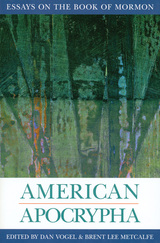
Consider the Book of Mormon, first published in 1830. The nature of this volume—in particular its claim to antiquity—is the theme of nine ground-breaking essays in American Apocrypha. Thomas W. Murphy discusses the Book of Mormon’s view that American Indians are descendants of ancient Hebrews. In recent DNA tests, Native Americans have proven to be of Siberian ancestry and not of ancient Jewish or Middle Eastern descent. Nor is the Book of Mormon a traditional translation from an ancient document, writes David P. Wright, as indicated by the underlying Hebrew in the book’s Isaiah passages. Other contributors to American Apocrypha explore the evolution of ideas in the Book of Mormon during the course of its dictation.
Editors Dan Vogel and Brent Metcalfe have chosen essays by authors who represent a wide range of disciplines and perspectives: Robert Price edits the Journal of Higher Criticism; Thomas Murphy chairs the anthropology department at Edmonds Community College; David Wright teaches Hebrew Bible at Brandeis University. They are joined by Scott C. Dunn; Edwin Firmage, Jr.; George D. Smith; and Susan Staker—all of whom explore what can be reasonably asserted about the Book of Mormon as scripture.
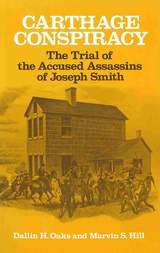
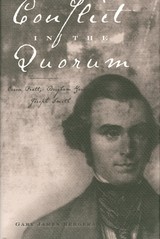
At a meeting of the LDS Quorum of the Twelve in 1860, one of the church’s senior apostles, Elder Heber C. Kimball, complained that “Brother Orson Pratt has withstood Joseph [Smith] and he has withstood Brother Brigham [Young] many times and he has done it tonight and it made my blood chill. It is not for you to lead [the prophet],” Kimball continued, “but to be led by him. You have not the power to dictate but [only] to be dictated [to].”
Whenever the quorum discussed Elder Pratt’s controversial sermons and writings and his streak of independent thinking, the conversation could become heated. As documented by Gary James Bergera in this surprisingly suspenseful account, Pratt’s encounters with his brethren ultimately affected not only his seniority in the Quorum of the Twelve but also had a lasting impact on LDS doctrine, policy, and organizational structure.
“There is not a man in the church that can preach better than Orson Pratt,” Brigham Young told the twelve apostles on another occasion. “It is music to hear him. But the trouble is, he will … preach false doctrine.”
Pratt responded that he was “not a man to make a confession of what I do not believe. I am not going to crawl to Brigham Young and act the hypocrite. I will be a free man,” he insisted. “It may cost me my fellowship, but I will stick to it. If I die tonight, I would say, O Lord God Almighty, I believe what I say.”
“You have been a mad stubborn mule,” Young replied. “[You] have taken a false position … It is [as] false as hell and you will not hear the last of it soon.”
Not infrequently, these two strong-willed, deeply religious men argued. Part of their difficulty was that they saw the world from opposing perspectives—Pratt’s a rational, independent-minded stance and Young’s a more intuitive and authoritarian position. “We have hitherto acted too much as machines … as to following the Spirit,” Pratt explained in a quorum meeting in 1847. “I will confess to my own shame [that] I have decided contrary to my own [judgment] many times. … I mean hereafter not to demean myself as to let my feelings run contrary to my own judgment.” He issued a warning to the other apostles: “When [President Young] says that the Spirit of the Lord says thus and so, I don’t consider [that] … all we should do is to say let it be so.”
For his part, Young quipped that Pratt exhibited the same “ignorance … as any philosopher,” telling him “it would be a great blessing to him to lay aside his books.” When Pratt appealed to logic, Young would say, “Oh dear, granny, what a long tail our puss has got.”
Ironically, Orson Pratt would have the last word both because Young preceded him in death and because several of Young’s teachings and policies had proven unpopular among the other apostles. One of Young’s counselors said shortly after the president’s death that “some of my brethren … even feel that in the promulgation of doctrine he [Young] took liberties beyond those to which he was legitimately entitled.” Meanwhile, Pratt continued to hold sway with some of his colleagues. His thoughtful—if ultra-literalistic—interpretations of scripture would also influence such later church leaders as Joseph Fielding Smith and Bruce R. McConkie.
Bergera’s nuanced approach avoids caricatures in favor of the many complexities of personalities and circumstances. It becomes clear that the conflict in which these men found themselves enmeshed had no easy, foreseeable resolution.
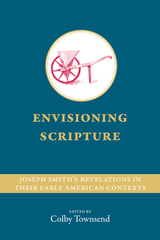
Contributors include Catherine A. Brekus, William Davis, Elizabeth Fenton, Kathleen Flake, Paul Gutjahr, Jared Hickman, Susan Juster, Seth Perry, Laura Thiemann Scales, and Roberto A. Valdeón.
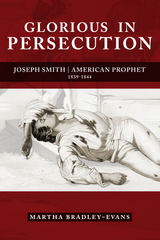
Escaping imprisonment in Missouri in 1839, the Mormon prophet Joseph Smith quickly settled with family and followers on the Illinois banks of the Mississippi River. Under Smith’s direction, the small village of Commerce soon mushroomed into the boomtown of Nauvoo, home to 12,000 and more members of the Church of Jesus Christ of Latter-day Saints.
For Smith, Nauvoo was the new epicenter of the Mormon universe: the gathering place for Latter-day Saints worldwide; the location of a modern-day Zion; the stage upon which his esoteric teachings, including plural marriage and secret temple ceremonies, played out; and the locus of a theocracy whose legal underpinnings would be condemned by outsiders as an attack on American pluralism.
In Nauvoo, Smith created a proto-utopian society built upon continuing revelation; established a civil government that blurred the lines among executive, legislative, and legal branches; introduced doctrines that promised glimpses of heaven on earth; centralized secular and spiritual authority in fiercely loyal groups of men and women; insulated himself against legal harassment through creative interpretations of Nauvoo’s founding charter; embarked upon a daring run at the U.S. presidency; and pursued a vendetta against dissidents that lead eventually to his violent death in 1844.
The common thread running through the final years of Smith’s tumultuous life, according to prize-winning historian and biographer, Martha Bradley-Evans, is his story of prophethood and persecution. Smith’s repeated battles with the forces of evil–past controversies transformed into mythic narratives of triumphant as well as present skirmishes with courts, politicians, and apostates–informed Smith’s construction of self and chronicle of innocent suffering.
“Joseph found religious and apocalyptic significance in every offense and persecution–actual or imagined,” writes Bradley-Evans, “and wove these slights into his prophet-narrative. Insults became badges of honor, confirmation that his life was playing out on a mythic stage of opposition. By the time Joseph led his people to Illinois, he had lived with the adulation of followers and the vilification of enemies for more than a decade. Joseph’s worst challenges often proved to be his greatest triumphs. He forged devotion through disaster, faith through depression. Joseph interpreted each new event as God’s will set against manifestations of evil opposed to the restoration of all things.”
Bradley-Evan’s ground-breaking portrait of Smith goes farther than any previous biography in explaining the Mormon prophet and the mystery of his appeal.
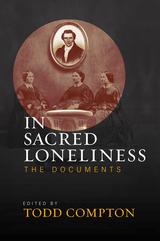
This volume includes many autobiographical writings, diaries, and letters, with Compton providing annotations and introductory material that illuminates these crucial primary sources. This allows readers to take their understanding of this unique group of women to a new level and to drive home that fact that their lives go far beyond the Nauvoo experiment that forever links them to Mormonism’s founding prophet.
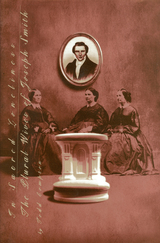
The majority of Smith’s wives were younger than he, and one-third were between fourteen and twenty years of age. Another third were already married, and some of the husbands served as witnesses at their own wife’s polyandrous wedding. In addition, some of the wives hinted that they bore Smith children—most notably Sylvia Sessions’s daughter Josephine—although the children carried their stepfather’s surname.
For all of Smith’s wives, the experience of being secretly married was socially isolating, emotionally draining, and sexually frustrating. Despite the spiritual and temporal benefits, which they acknowledged, they found their faith tested to the limit of its endurance. After Smith’s death in 1844, their lives became even more “lonely and desolate.” One even joined a convent. The majority were appropriated by Smith’s successors, based on the Old Testament law of the Levirate, and had children by them, though they considered these guardianships unsatisfying. Others stayed in the Midwest and remarried, while one moved to California. But all considered their lives unhappy, except for the joy they found in their children and grandchildren.
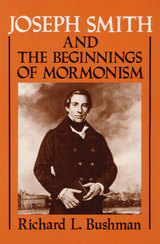
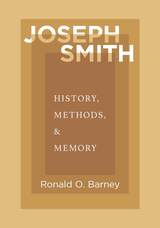
Ronald O. Barney, a former editor of the Joseph Smith Papers, applies new interpretations to Smith in history and memory, re-examining both his writings and contemporary accounts of him. The book explores the best methodologies for appraising the historical record, including a review of Smith’s world and its contextual background, an analysis of his foundational experiences, and a characterization of Smith as a man and prophet. Though the premise of re-evaluation may be unsettling to traditionalists, a modern reconsideration of the historical record’s entire range of sources is necessary to fashion a strategy for evaluating Smith and his enduring but complex legacy.
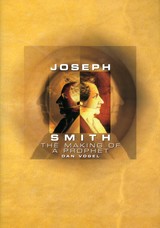
Vogel weaves together strands of evidence into a complete fabric including, among other aspects of Smith’s environment, the content of his daily dictation of scriputre and revelation—all contributing to a nearly complete view of what occurred on any given day in Smith’s lfie. The result is as much intellectual history as traditional biography. Readers will feel engaged in the dramatic, formative events in the prophet’s life against a backdrop of theology, local and national politics, Smith family dynamics, organizational issues, and interpersonal relations. One can form a mental picture, and many will find themselves carrying on an internal dialogue about the issues raised.
Vogel addresses the following broad themes:
1. The home that Joseph Smith was raised in was religiously divided. His mother’s family was orthodox and partly mystical; his father’s family tended toward rationalism and skepticism. Joseph’s maternal grandfather published an account of seeing a heavenly light and hearing Jesus’ voice. Joseph’s paternal grandfather promoted Thomas Paine’s skeptical critique of the Bible, The Age of Reason.
2. When Andrew Jackson was elected U.S. president in 1828, it was a key transitional period in American history. Jackson was a Mason and an advocate of secularism, which alarmed evangelical Protestants.
3. The Smith family experienced a series of financial setbacks and lost their farm in 1825. Joseph felt disinherited and saw no way of escape—no chance for his family to regain its former standing in the community.
4. Joseph found solace in religion. In the early 1820s, he had a powerful conversion experience and felt that Jesus had forgiven him of his sins. This inspired him to share the gospel message with others, particularly with his own family. About the same time, Smith found a talent for preaching and delivered “passable” Methodist sermons at a nearby revival.
5. Over time, Joseph became aware that people trusted him and that he could be an influence for good or ill, that even through nefarious means, God worked through him when his heart was right. He realized this when he led groups in search of Spanish treasure in New York and Pennsylvania. Although no treasure was found, the men sincerely believed that Smith had a spiritual gift and could see where casks of gold were hidden in the earth. This training ground in spiritual leadership was invaluable because the prophet learned how to create an environment for belief—one in which people could exercise faith and be converted to Christ through the sensible influence of the Spirit, all prior to the overarching work of restoring primitive Christianity.
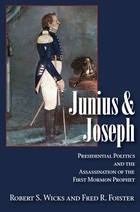
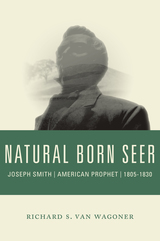
Joseph Smith survives today as one of nineteenth-century America’s most controversial religious figures. He claimed visions of angels, dictated a lost record of the ancient inhabitants of the New World, announced new revelations from heaven, and restored what he believed was an ancient yet more complete form of Christianity, over which he presided as prophet, seer, and revelator until his death in 1844.
A child of impoverished Yankees, raised in rural New England and New York, Smith grew up in a hardscrabble frontier culture that embraced a spectrum of competing folkways, religious fervor, and intellectual thought. He was both a product of his times and a syncretic innovator of a compelling vision for God’s people. Perhaps more importantly, he was the self-proclaimed herald of Christ’s imminent return, called by the Father to reveal the fullness of the Christian gospel for the last time.
As prize-winning historian Richard S. Van Wagoner narrates the first twenty-five years of Smith’s life, the young seer struggled with his family through a series of roller-coaster hardships, eventually securing work as a scryer of lost treasure and money digger. In the wake of successive failures, including run-ins with the law, Smith’s glass-looking activities gave way to more religiously oriented pursuits, especially after a heavenly messenger showed him the location of buried golden plates containing a pre-Columbian story of the Americas and charged him with the record’s decipherment and publication.
Smith also learned, following another extraordinary vision, that his sins had been remitted, that humanity was in a state of apostasy, and that Jesus would soon return to the earth. After eloping with Emma Hale, much to her skeptical father’s chagrin, the couple settled down to complete work on what would appear for sale in early 1830 as the Book of Mormon. By this time, Smith had begun to shoulder more fully the prophet’s mantle, issuing proclamations in God’s own voice, and on April 6, 1830, organized the Church of Christ, known today as the Church of Jesus Christ of Latter-day Saints.
“I treat the early years of the Mormon prophet as I would approach an archaeological dig,” Van Wagoner explains. “The deepest levels, those deposited first and least contaminated by subsequent accumulates, are of primary interest in my pursuit of the historical Joseph. Mindful of the prophet’s controversial reputation, I try to remain sensitive to the impact that some of the more problematic elements of his behavior may have on believers. But truth is often best evidenced in the detail.”
Van Wagoner’s meticulously researched study offers more detail than any previously published biography of Smith, and provides what may be the most culturally nuanced analysis ever attempted of the early years of the American prophet.
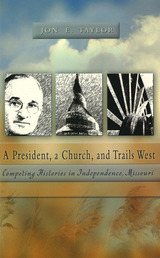
Over the past century, three nationally significant histories have vied for space and place in Independence, Missouri. Independence was declared Zion by Joseph Smith, served as a gathering and provisioning point for trails west, and was called home by President Harry S. Truman for sixty-four years. Historian Jon E. Taylor has integrated research from newspapers, public documents, oral histories, and private papers to detail how the community has preserved and remembered these various legacies.
Truman’s legacy would appear to have been secured in Independence via three significant designations—his presidential library opened there in 1957, his neighborhood was designated a national historic landmark in 1972, and his home was declared a national historic site in 1982. However, Taylor argues that Truman’s seeming dominance in the community’s memory is in fact endangered by competition from the other aspects of the town’s historical heritage.
Taylor considers the role Mormon history has played in the city's history and chronicles how the Reorganized Church of Jesus Christ of Latter Day Saints returned to Independence to fulfill Joseph Smith's dream of creating Zion in the city, a situation that impacted neighborhoods near the Truman home. Taylor also examines the city's fascination with the Santa Fe, Oregon, and California trails, detailing how that history was lost and remembered and is now immortalized on the Independence square and in the National Frontier Trails Museum.
In the 1980s, the city council reduced the size of the Truman Heritage District, created to maintain Truman’s association with his neighborhood, after church opposition. At the same time, city officials pushed to make Independence a major tourist destination, a move largely dependent upon the city capitalizing on its association with Truman. These inconsistent policies and incongruous goals have led to innumerable changes in the landscape Truman enjoyed during his legendary morning walks.
A President, a Church, and Trails West chronicles one city’s struggle to preserve its history and the built environment. Taylor places the role of preservation in Independence not only within the larger context of preservation in the United States but also within the context of American environmental history. This volume is sure to appeal to anyone interested in public history, historic preservation, history and memory, and local history.
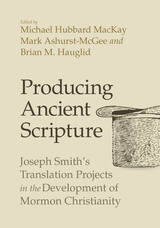
This collaborative volume is the first to study Joseph Smith’s translation projects in their entirety. In this carefully curated collection, experts contribute cutting-edge research and incisive analysis. The chapters explore Smith’s translation projects in focused detail and in broad contexts, as well as in comparison and conversation with one another. Authors approach Smith’s sacred texts historically, textually, linguistically, and literarily to offer a multidisciplinary view. Scrupulous examination of the production and content of Smith’s translations opens new avenues for understanding the foundations of Mormonism, provides insight on aspects of early American religious culture, and helps conceptualize the production and transmission of sacred texts.
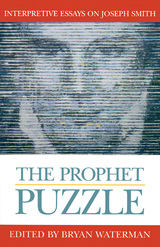
Some of the contributors to this anthology look at the religious side of the prophet and explore his inner, spiritual world. Others look at secular issues. Some view the relevance of his activity as a treasure seer since this is one part of the puzzle that has not been fully investigated by Mormons generally.
In pursuing the prophet puzzle, contributors seek to understand Joseph Smith, not to judge him, knowing that he is an enigma for believer and skeptic alike. As non-Mormon historian Jan Shipps, a contributor to this collection, observes, “The mystery of Mormonism cannot be solved until we solve the mystery of Joseph Smith.”
Contributors include Thomas G. Alexander, Robert D. Anderson, Gary James Bergera, Newell G. Bringhurst, Richard L. Bushman, Eugene England, Lawrence Foster, Ronald V. Huggins, Lance S. Owens, Karl C. Sandberg, Jan Shipps, Joseph Smith, Susan Staker, Alan Taylor, Richard S. Van Wagoner, Dan Vogel, and Steven C. Walker.
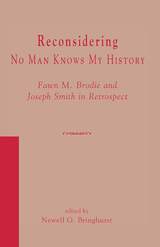
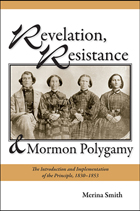
When Joseph Smith began to reveal and teach the doctrine of plural marriage in 1841, even stalwart members like Brigham Young were shocked and confused. In this thoughtful study, Smith argues that the secret introduction of plural marriage among the leadership coincided with an evolving public theology that provided a contextualizing religious narrative that persuaded believers to accept the principle.
This fresh interpretation draws from diaries, letters, newspapers, and other primary sources and is especially effective in its use of family narratives. It will be of great interest not only to scholars and the general public interested in Mormon history but in American history, religion, gender and sexuality, and the history of marriage and families.
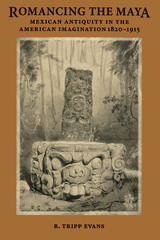
During Mexico's first century of independence, European and American explorers rediscovered its pre-Hispanic past. Finding the jungle-covered ruins of lost cities and artifacts inscribed with unintelligible hieroglyphs—and having no idea of the age, authorship, or purpose of these antiquities—amateur archaeologists, artists, photographers, and religious writers set about claiming Mexico's pre-Hispanic patrimony as a rightful part of the United States' cultural heritage.
In this insightful work, Tripp Evans explores why nineteenth-century Americans felt entitled to appropriate Mexico's cultural heritage as the United States' own. He focuses in particular on five well-known figures—American writer and amateur archaeologist John Lloyd Stephens, British architect Frederick Catherwood, Joseph Smith, founder of the Church of Jesus Christ of Latter-Day Saints, and the French émigré photographers Désiré Charnay and Augustus Le Plongeon. Setting these figures in historical and cultural context, Evans uncovers their varying motives, including the Manifest Destiny-inspired desire to create a national museum of American antiquities in New York City, the attempt to identify the ancient Maya as part of the Lost Tribes of Israel (and so substantiate the Book of Mormon), and the hope of proving that ancient Mesoamerica was the cradle of North American and even Northern European civilization. Fascinating stories in themselves, these accounts of the first explorers also add an important new chapter to the early history of Mesoamerican archaeology.
READERS
Browse our collection.
PUBLISHERS
See BiblioVault's publisher services.
STUDENT SERVICES
Files for college accessibility offices.
UChicago Accessibility Resources
home | accessibility | search | about | contact us
BiblioVault ® 2001 - 2024
The University of Chicago Press









